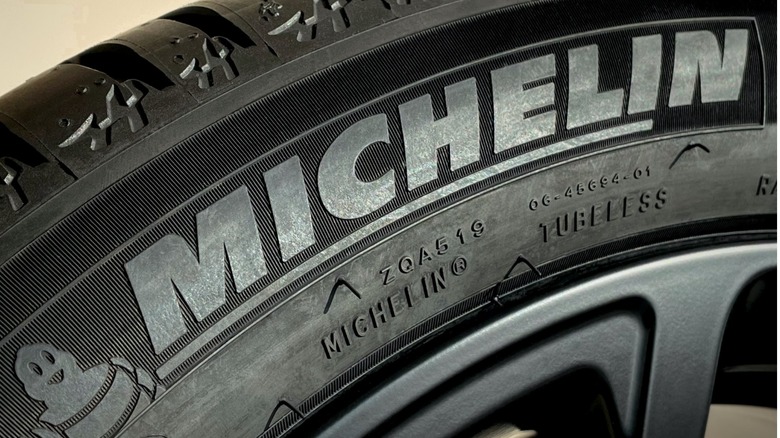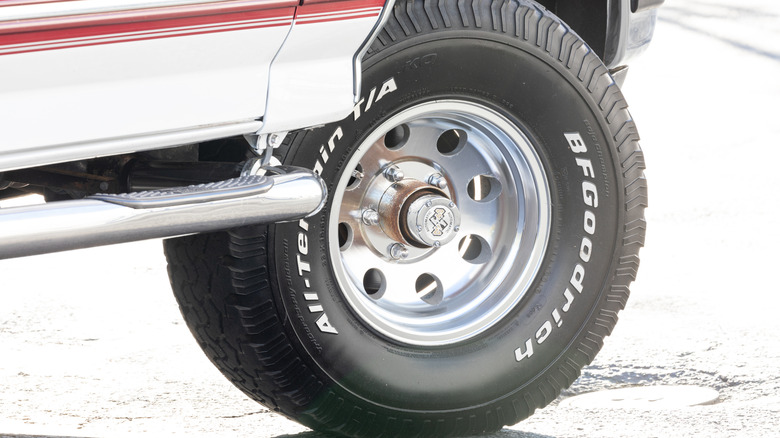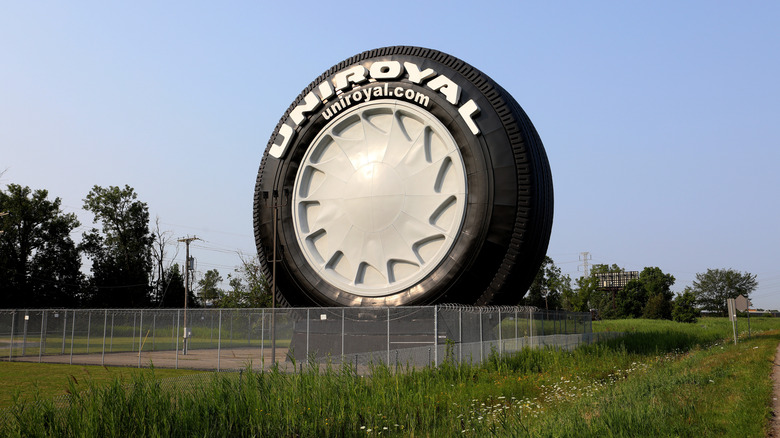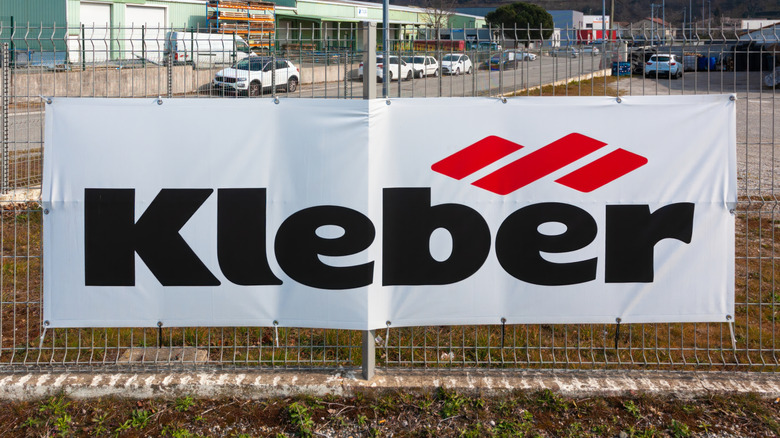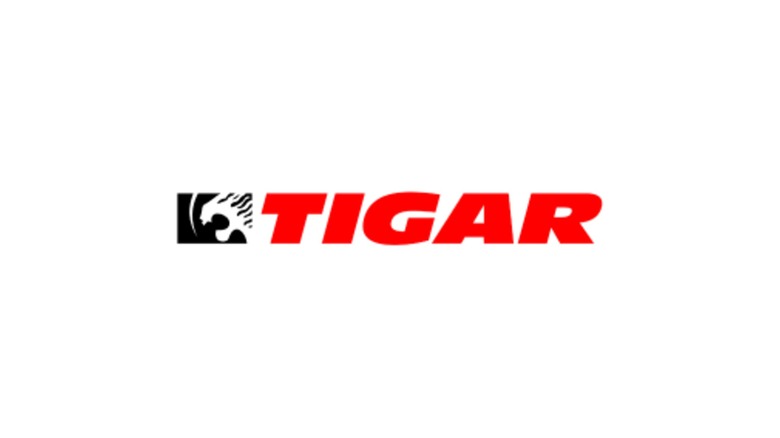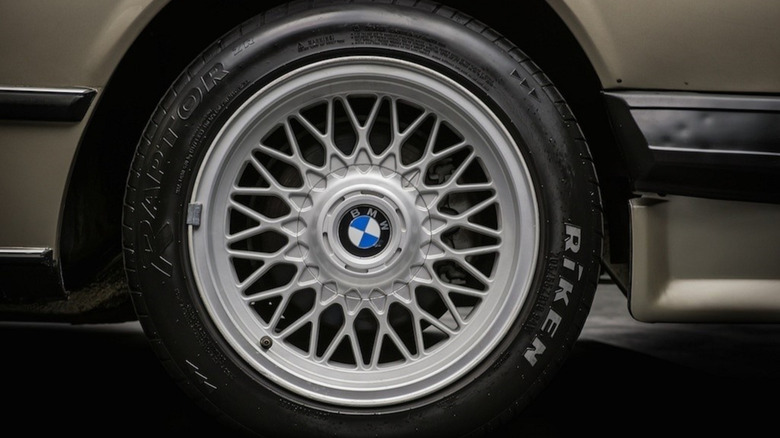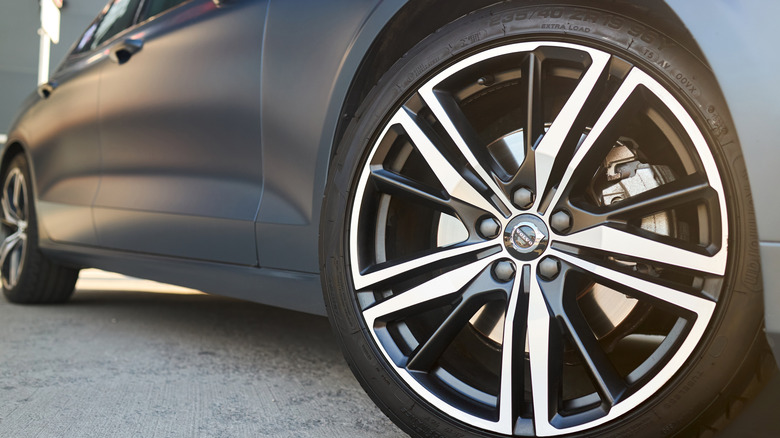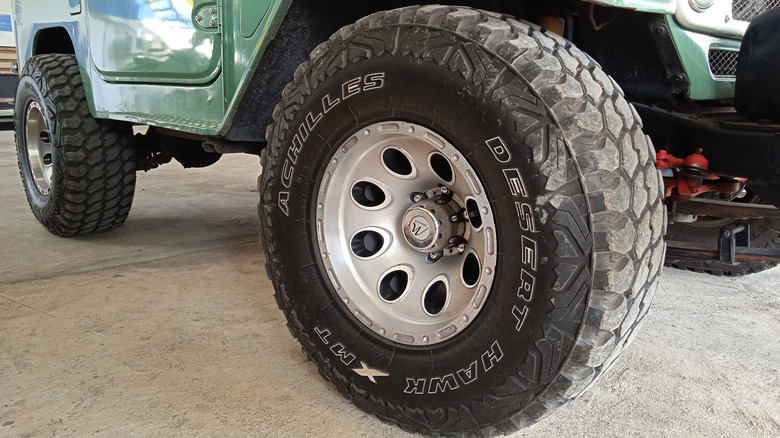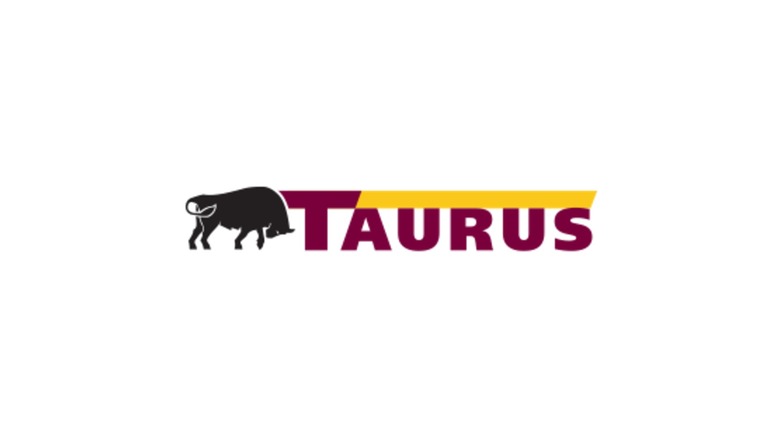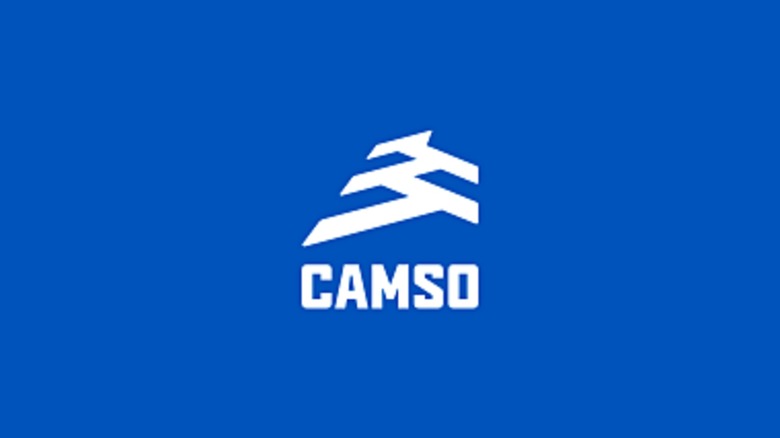9 Tire Brands Owned By Michelin
Even if you aren't a hardcore car enthusiast, you've likely heard of Michelin. This brand is the biggest tire manufacturer in the world, with the exception of Lego, and that's only if you stretch your definition of what constitutes a tire. Those looking to discover where Michelin tires are made will find many factories across multiple continents, with part of this immense scale being owed to the help of other companies. There are nine tire brands owned by Michelin, though that might not be easy to discern from a quick look.
While it's not too difficult to find some of the major players partnered with Michelin, there are a few others that lack the same pull. Some of them even lack Wikipedia pages, and the official Michelin website doesn't share a clear list of brands that were acquired in the past. There are still some records of acquisitions and partnerships, though, which makes it easier to see how this company has made it so far.
BFGoodrich
BFGoodrich was actually the only tire brand under Michelin — other than Michelin itself — to crack into our top 10 major tire brands of 2025. It covers most of what the average consumer might need, including tires designed for ATVs and high-performance cars, allowing its name to stay in the headlines for a wide variety of audiences. In the past, multiple BFGoodrich tires would even adorn popular movie vehicles like the Ghostbusters Ecto-1 and Jurassic Park's Jeep Wrangler. Following Michelin's acquisition of the brand in 1988, though, it wouldn't manage to retain its widespread popularity for much longer.
Although BFGoodrich is now under Michelin, there are valid reasons to buy one company's tires over the other's. While the former is usually seen as a more budget-friendly pick, its products are able to hold up well in off-road situations. The partnership has also allowed BFGoodrich to be defended by Michelin in cases of patent lawsuits, helping to prevent it from being a victim of unfair competition. It's clear that, despite Michelin pretty much overtaking BFGoodrich in popularity, both companies are still making the most out of their time together.
Uniroyal
Uniroyal shares a lot of traits with BFGoodrich as an American company that was founded before the 1900s. However, Uniroyal also has its own landmark in the form of a massive tire-shaped Ferris wheel that was constructed for the 1964-1965 World's Fair. This landmark was eventually moved to the same state where Uniroyal tires are made, helping the brand stay fresh in the minds of Americans for decades to come. These days, it's seen as an even more budget-friendly pick than BFGoodrich, staying reliable without being overly expensive.
Michelin would acquire Uniroyal sometime around 1990, causing its worldwide market share to grow by almost 25%. BFGoodrich is often lumped in with the other two brands in advertisements and news reports, with each one filling its own niche. This effectively allows Michelin to reach out to the entire American audience, letting it sit comfortably among other manufacturers in the States. While it's able to do this with just two extra brands for the U.S., overseas markets are another story entirely, with far more brands under Michelin's banner.
Kleber
Much like Michelin, Kleber Tyres is a manufacturer from France, though it got its start a bit later, in 1911. It would go on to remain a well-respected brand to this day, but financial difficulties wouldn't have let that happen if Michelin hadn't become a majority shareholder. As a result, Kleber is seen chiefly as another brand under the bigger company's label, and some enthusiasts have compared its lineup to what BFGoodrich offers. The acquisition might have saved the brand, but it seems to lack much of its own identity these days as a trade-off.
Although it's far from the most beloved brand out there, there's a reason Kleber is still able to survive today — even ignoring the help it got from Michelin. The company offers a wide variety of tires with a focus on seasons, including dedicated winter tires that can bear the struggles of snow and ice. The difference between winter vs. all-season tires is actually quite important, especially depending on the climate you live in. Of course, seasonal tires are also offered by the other brands mentioned already, but Kleber at least isn't falling behind much in comparison.
Tigar
Tigar Tyres is a more recent example of Michelin's acquisitions. Although the company built its first factory in the 1930s, tire production didn't start until 1959, and it wouldn't be until 2010 that it would be bought out entirely. Interestingly, Tigar ended up partaking in a joint venture with BFGoodrich before the latter was also acquired by Michelin, which is quite coincidental when looking at where they ended up. But the news of Tigar's acquisition wasn't met with universal praise, and its place in the modern-day market isn't quite as clear as it is for its partners.
Just a couple of years after Tigar's acquisition, analysts and investors criticized Michelin's decision to expand its operations. The biggest reason for this was Tigar's continued focus on creating entry-level tires, which didn't please those who saw its newfound parent company as a highlight of premium products. Additionally, the Europe-focused manufacturer's lineup is notably scarce, even falling short of what Kleber offers in terms of variety. Top that off with controversies such as worker deaths, and it's possible that Michelin's ownership is likely the biggest thing keeping Tigar afloat these days.
Riken
At first glance, you might notice a few similarities between Riken and Tigar. Its official website is almost a carbon copy, with many shared images and even similar products despite having different names and histories. The most significant ways Riken stands out are in dates and location, as it's a Japanese brand from 1917 that joined Michelin in 1992. Due to this, it's lumped in with a few of Michelin's other budget-oriented brands outside of the U.S., once again falling short of the premium image its parent company is known for.
Although it was initially founded as a scientific research company, the Riken that makes tires today seems to be very different from the Riken that made a robot to take care of Japan's elderly population. In fact, the latter's website doesn't even mention tires or Michelin anywhere, with the only lasting connection being the name. It's interesting to see just how much Michelin's acquisition changed things for the brand, and how both segments of Riken seem to continue operations completely independently of each other.
Kormoran
At this point, a simple glance at Kormoran's website should clue you in as to which company owns it. The page is once again nearly identical to Riken's and Tigar's, from the formatting and images to the included hyperlinks. Oddly enough, even most of the text on its history page is lifted from Tigar's. The most unique thing about Kormoran is its product listing, which somehow has even fewer options for passenger and truck tires.
Although it's known at this point that Kormoran is owned by Michelin, there's not a lot you can find online about when this acquisition occurred. One source says it happened in 1995 while another says it was in the year 2000, muddying the waters even further. Kormoran's lineup doesn't offer anything near the most expensive tires in the world, but even as an especially cheap pick, it seems to be passed up by the wider public. It's honestly quite difficult to pinpoint what its future might hold, even with Michelin backing it up.
Achilles/Corsa
Rather than acquire one tire brand in a single sale, Michelin went for a larger corporation that already owned two in 2019. That company was Multistrada, an Indonesian group that covers the Achilles and Corsa brands. Achilles isn't too far off from the previously mentioned budget brands, though it's been able to secure a foothold in the U.S. These days, Achilles is mostly managed by TBC, a subsidiary of the Sumitomo corporation that runs it with a 50:50 partnership with Michelin.
Corsa's status and history are a bit trickier to pin down. On top of sharing a name with a foreign car model powered by GM's small gasoline engine, there seem to be at least two different Corsa tire brands with their own logos. One is focused on high-performance tires for enthusiasts, while the other is an exclusive brand for a specific online storefront known as Discount Tire. It's hard to say if even these are the Corsa that was under Multistrada, making this particular brand perhaps the most mysterious under Michelin's ownership.
Taurus
Although Ford discontinued the Taurus after over 30 years, this wouldn't cause the name to disappear from the vehicle industry. Granted, Taurus Tyres doesn't have much to do with Ford in the first place, but it's lasted for a much longer period of time than the sedan. With the brand first appearing in 1913 and being acquired by Michelin in 1996, it shares some similarities with the other established companies on this list. But if you decide to visit its website — particularly for passenger cars — you'll see just how close those similarities really are.
Just like with Tigar, Riken, and Kormoran, Taurus follows the website layout used by Michelin's cheaper brands. It also shares the same negative perception as those brands, with reviews of its products being mixed at best. It does at least offer tires for agricultural use, helping to fill a niche that isn't shared by many of the alternative low-end Michelin-owned companies. Still, it's hard not to feel bad for Taurus when Michelin's Ford tires outrank it in web searches.
Honorable Mention: Camso/Solideal
Camso — a company that produces tires under its own name and under the Solideal brand — is a bit of a special case. Its tires are more focused on off-road and construction vehicles, such as tractors, excavators, and forklifts. Few other brands owned by Michelin have such a heavy focus on tire use outside of highways and trucks, so acquiring Camso and Solideal would have allowed it to break new ground. So why is this company listed as an honorable mention here instead of simply another brand under the French company's wing?
The catch here is that Michelin owned Camso — past-tense. The company was acquired in 2018 for $1.45 billion USD, but at the end of 2024, it was sold off to CEAT for only around $225 million. Camso still includes a few direct links to Michelin materials on its website, but it's only a matter of time before the two companies go their separate ways for good. One can only wonder how poorly the partnership went for it to break down so quickly, especially with the breakup resulting in a financial loss of over $1 billion.
UPDATE: Per a Michelin representative, "Michelin did not completely sell off the Camso brand immediately after the purchase. To clarify the situation, the sale of Camso to CEAT involves only two
manufacturing plants and the brand itself. Most important, the agricultural tracks business will continue within the Michelin Group. The difference in purchase/sale price is reflected in this."
